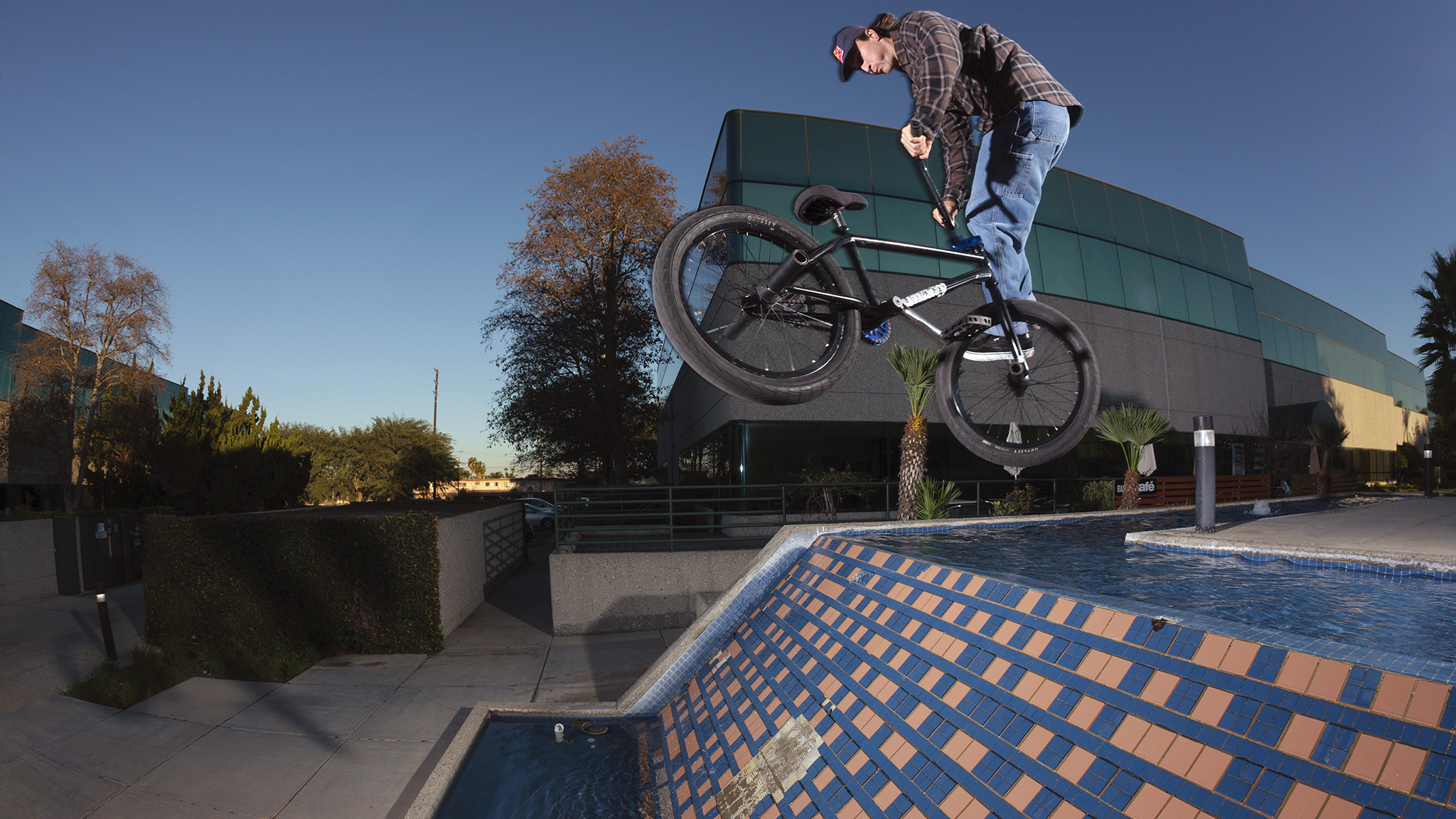
BMX bikes are low frame bikes with 20 or 24 inch wheels and no gears. They require minimal adjustment, are reasonably fast and easy to ride and, thanks to their durability, are ideal for children and teenagers. The choice of model depends on your preferred riding style (see Skating Styles, Sizing).
Moto eXtreme Bike
This sport, which dates back to the 1960s, owes its origins to the children of motocross racers who, when they weren’t out racing, went to the track to ride their bikes. After a while, even adults found the sport very entertaining. The first BMX track was not much different from the motocross track, except that it was a bit shorter. Over time, the track became more complicated, invented certain rules and began to hold competitions. This type of competition gained immense popularity and began to develop as an independent sport. Today, there is an international organisation for the development and holding of competitions in this sport. As in any sport, there are international requirements for cycle paths, bicycles, equipment and competitions.
BMX accessories
- Fork. Element of the bicycle frame that connects the front wheel and the handlebar stem.
- Hub. Contains moving parts that allow the wheel to turn.
- Handlebar stem. Attaches to the top of the fork and connects the handlebars to the fork.
- Swivel Steering System. The BMX has a special system for the unobstructed passage (no twisting) of the front and rear brake cables, while repeatedly turning the handlebars 360 degrees.
- Grip grips. The handlebar grips of BMX machines have a special safety stop that protects the rider’s hands from damage caused by the front brake handlebars.
- Rear brake. A system of chocks, levers, cables and levers used to brake and lock the rear wheel.
- Protection. The sport of VIC involves risky stunts, and can be quite traumatic. In addition to the mandatory helmet, knee and elbow pads and shoulder pads are necessary for BMX.
- Sprockets. A sprocket with a chain attached to it, designed to transmit power.
- Front brake. A system of levers, pads, cranks and cables combined in a gyroscopic design that allows the handlebars and front wheel to rotate about their own vertical axis 360 degrees.
- Seat Post. Aluminium tube with an integral saddle.
- Pegs. A special aluminium hub to mount on the front and rear wheel axle for Flatland and Street/Freestyle riding.
- Dimensions. All BMX bikes have a standard size and only differ in wheel diameter and base length. When choosing a BMX bike, your riding style will be the deciding factor. The shorter wheelbase, the distance between the handlebars and the saddle, makes the bike more manoeuvrable and better suited for Flatland. The longer base allows for a softer landing and is most suitable for Street/Freestyle.
- Frame. The main frame of the bike that carries all the extra bits and bones. BMX bikes usually have an aluminium or chrome-moly tubing with an attached saddle, providing seemingly incompatible goals of strength and lightweight construction.
- Handlebars. The BMX, a welded steel construction, has the function of steering the bike.
- Spokes. The handlebar construction fulfils the function of steering and controlling the bicycle.
- Brake levers. Handlebar-mounted levers, connected by cables to the brake levers.
Riding styles
Over the course of BMX sport’s development, it has been divided into several areas:
- Race;
- Street/Freestyle;
- Dirt;
- Flat;
- Half pipe and Cross.
RACE stands for competition and racing. This type of BMX is a competition on a specially prepared track, which must have 6 to 12 obstacles and 3 to 6 turns (U-turns). There are 8 competitors at the start, as the start area has only 8 tracks. The height of the structure or simply of the slide is one and a half to six metres. The starting fence will be 0.5m. The width of one lane is 1 m, and the total width of the track is at least 6 m. The length of the track is 250 to 500 m. The track shall be covered with screened and well compacted macadam, and the use of concrete and asphalt is allowed. The complexity of the course is not limited to the sole requirement that an athlete of any level can overcome the route. Officially, the age of competitors is set at 6 years, but strictly speaking, even 5-year-olds can participate in the event. Teams can be based on the year of birth, with the oldest competitors being those over the age of 50.
STREET/FREESTYLE – translates from English as street. In fact, it is a competition on artificial ramps and skating on ramps, fan boxes, railings, steps, parapets and other wonderful places not for speed, but for complexity of execution of any element, difficult tricks, the more difficult and correct the execution, the more points are awarded to the athlete. There is only one athlete on the starting slide, there is no starting corridor, there is no starting fence and there is no set order of obstacles. The athletes have a few minutes to impress the spectators and the judges with their free routine.
FLATLAND translates as flat, level surface. In many ways it is similar to street style. Competitions are held on completely flat terrain or asphalt. The bike has additional footpegs on the front and rear axle, known as pags, and brakes, front and rear. The aim is to do as many interesting tricks as possible in a given time.
DIRT – which means mud. For competitions, two or three ski jumps are built, one and a half metres high and four to eight metres long between the two peaks; sometimes earth is placed between these hills on purpose, so that a failed jump will not cause any harm to the athlete. The ramps are placed in a straight line, without turns. Only one athlete enters the start hill. He/she accelerates, jumps off the ramp and performs a somersault, 360 degree turn or any other trick. The more difficult the jump, the more points the judges will give.
HALF PIPE – translated from English as “half pipe”. Obstacle, which is a competition similar to the halfpipe, also called “ramp”. The whole competition takes place on the same obstacle, an athlete enters the ramp, and starts accelerating from side to side, jumping past the ramp, and performs a variety of tricks, depending on their complexity and is determined by the winner.
CROSS – cross-country races on specially constructed tracks that are scaled-down copies of motocross tracks. High speed, jumps and jumps attract a large number of participants and spectators.
You may also like:
